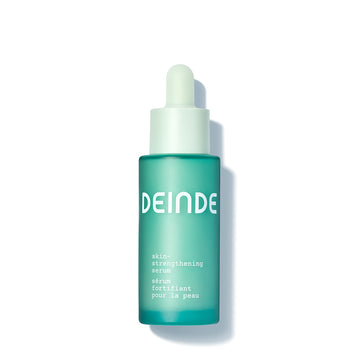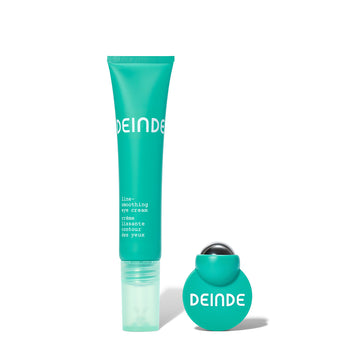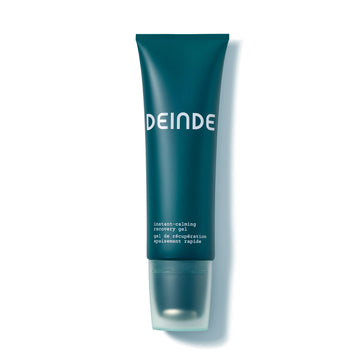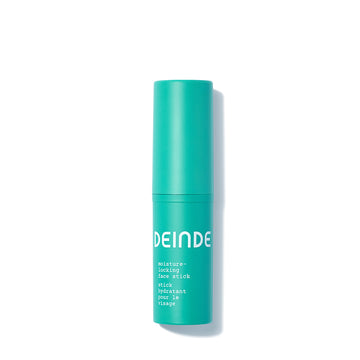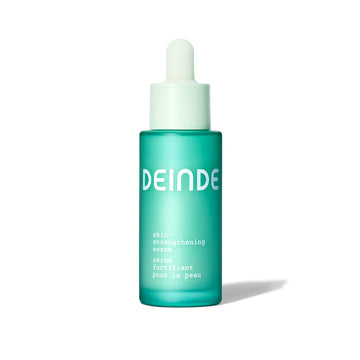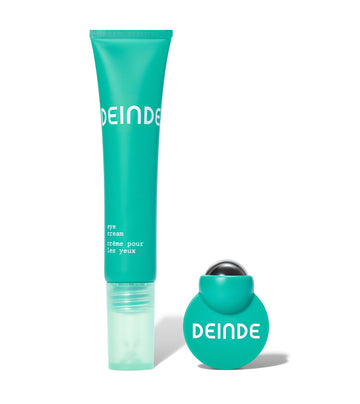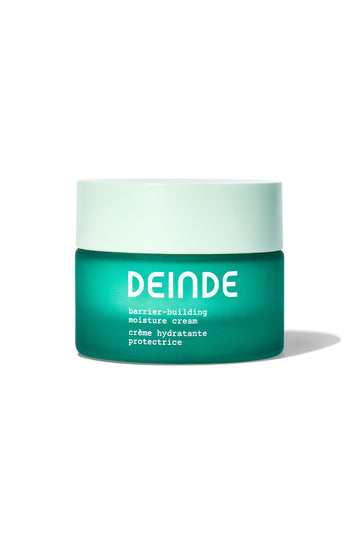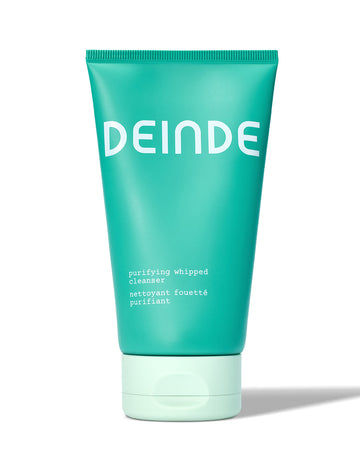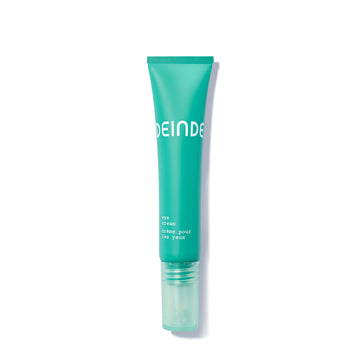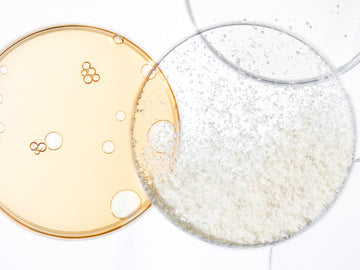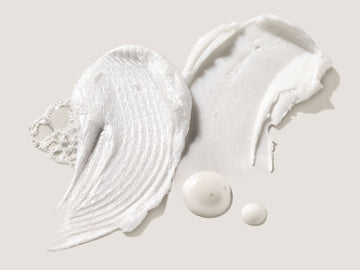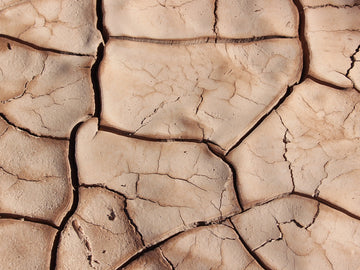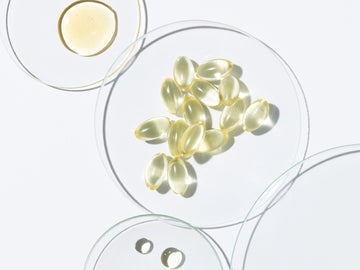
What Are Ceramides?
You know when something just sounds like it’s good for your skin? The term “ceramides” has been thrown around for years now, with very few people actually knowing what they are and what they do—not dissimilar to when your friend says “APR Financing” when they’re trying to prove they know anything about the housing market (but they only know the term.
However, unlike the housing market, which may never make any sense, ceramides are tried and true fatty acids contained within the skin that are being leveraged in highly effective skincare products. Because of their ability to promote healthy, radiant, glowing skin, ceramides play a critical role in supporting the outermost layer of the skin.
Let’s make this make sense.
What Do Ceramides Do For Your Skin?
lf we were putting our scientist hats on, we would tell you that ceramides belong to a class of lipid molecules known as sphingolipids. But since we’re in the middle of making this make sense, we’ll instead offer some hard math. Essentially, ceramides are fats or lipids that are found in your skin cells, making up 30-50% of your epidermis (which some people just call “the outer skin layer”). But they’re more than just a pretty face (lipid).
Ceramides help to form the skin’s natural barrier by building up its ability to retain moisture, which serves as a protective shield against external stressors such as pollution, UV radiation, and harsh weather conditions. When that barrier is weakened or compromised, your skin can become sensitive, dry, and irritated… or as we like to call it, “inflammaged."
Given the crucial role they play within the body, you can find many products on your local pharmacy shelf that are ceramide-forward—like moisturizers, creams, serums, and toners—all of which are meant to improve and balance ceramide levels to support healthy skin.
How Do Ceramides Benefit Your Skin Barrier?
We keep bringing up the skin barrier and the role ceramides play in keeping it strong and resilient. That’s because (at least for DEINDE) the skin barrier, which is also known as the lipid barrier or moisture barrier, is e-ss-en-tial for overall skin health.
Imagine it’s a frigid winter in New York City. Would you walk outside in the snow with a tank top, shorts, and sandals? We can hear your mother yelling, “Where’s your jacket?!” Consider us your proverbial skincare mother, shouting, “Where’s your skin barrier?” when you head out into the world every day.
When your ceramides are in moisture-lock step with your skin barrier, they work together with cholesterol and fatty acids to form a complex structure that helps to seal in moisture, maintain skin hydration levels, and protect against external irritants. Not only do they “do the work” to prevent toxic penetration of external stressors, but they also help to minimize the look of visible signs of aging (that can be expedited by chronic inflammation). Not us bringing up inflammaging again.
What Are The Main Types of Ceramides?
Natural ceramides can be found in a multitude of places—your skin, certain animal products, and plant-based sources like wheat germ, rice, and beets. Because ceramides are more stable and free from contaminants than other skincare actives, many brands have sought to weave them into their skincare products. However, with ceramides, there is no such thing as a “one-and-done.
In fact, there are 12 (count ‘em, 12!) types of ceramides that are based on the form of sphingosine they contain. Sphingosine—which is v science-y—is a long-chain of carbon amino alcohol that binds to fatty acids. Different types of ceramides complement different skin types and conditions, so knowing which which is which is important for getting the most out of your ceramide-based skincare.
Some of the most common ceramides we see in skincare:
- Ceramide 1 (ceramide EOS) → A key player in replenishing the skin’s barrier to be resilient against external stimuli that can compromise skin’s long-term health
- Ceramide 2 (ceramide NS or NG) → Helps skin produce more of its own ceramides to assist the skin barrier in retaining moisture, improving strength, and increasing protection against external stressors
- Ceramide 3 (ceramide NP) → Makes up only 16% of the skin’s general composition of ceramides (which hangs at around 50%). Reduced levels of ceramide AP has been shown to increase the prevalence of skin conditions like eczema and psoriasis
- Ceramide 9 (ceramide EOP) → Belongs to a larger group of ceramides containing phytosphingosine. Helps to lock in moisture, fight off external toxins, and decrease signs of premature aging
- Sphingosine (ceramide EOP) → Works to replenish and restore the skin from the outside in for a smoother, more hydrated complexion. Stops moisture loss from the skin barrier
- Phytosphingosine → A type of fat that is both antimicrobial and anti-inflammatory, supporting conditions like eczema and treating issues like acne (basically any irritation of the skin)
What Are the Main Benefits of Ceramides for Your Skin?
Here’s how ceramides benefit your skin on the daily.
→ Better Hydration and Overall Moisture Retention
One of the primary functions of ceramides is to prevent water loss from the skin and maintain optimal hydration levels. By reinforcing the skin barrier, ceramides help to lock in moisture, keeping the skin soft, supple, and hydrated. Reminds us of our dear friend, the moisture-locking face stick.
→ A More Resilient Skin Barrier
Ceramides play a vital role in repairing and strengthening the skin barrier, which can become compromised due to various factors such as aging, environmental damage, and harsh skincare products (over-exfoliating, we’re looking at you!). By replenishing ceramide levels, skincare products containing ceramides can help restore the skin's protective barrier, reducing moisture loss and dryness and preventing external irritants from penetrating the skin.
→ Soothing Properties
Ceramides possess soothing and cleansing properties, making them effective in soothing and calming irritated or sensitive skin. They help to alleviate redness and discomfort, making them potentially beneficial for individuals with certain skin conditions such as eczema, psoriasis, or rosacea.
→ Supports Youthful-Looking Skin
As we age, the natural production of ceramides in the skin naturally decreases, leading to a loss of elasticity and firmness. By incorporating ceramides into skincare products, it's possible to replenish and reinforce the skin's lipid barrier, helping to improve skin texture, reduce the appearance of fine lines and wrinkles, and promote a more youthful complexion over the long haul.
→ Improved Absorption + Effectiveness of Your Other Products
Ceramide products can enhance the penetration of other skincare ingredients in your skincare stack, allowing them to be more effectively delivered into the deeper layers of the skin. This synergistic effect can amplify the benefits of other active ingredients, such as antioxidants, vitamins, and peptides, resulting in more significant improvements in skin health and appearance.
How To Add More Ceramides to Your Daily Skincare Ritual?
Now that we’ve (hopefully) made you semi-obsessed with all things ceramides, it’s finally time for us to tell you how to better incorporate them into your skincare regimen:
- Cleansers → Start your skincare routine with a gentle cleanser that contains ceramides to effectively cleanse the skin without stripping away its natural oils. Look for hydrating cleansers that leave the skin feeling soft, nourished, and balanced
- Serums → Consider adding a ceramide-rich serum to your routine to deliver concentrated hydration and barrier repair benefits. Serums are lightweight and easily absorbed, making them ideal for layering underneath moisturizers or creams. Look for serums containing ceramides along with other beneficial ingredients such as hyaluronic acid, niacinamide, or peptides for added skin benefits
- Moisturizers → Opt for face moisturizers, creams, or balms that feature ceramides as key ingredients to provide long-lasting hydration and reinforce the skin barrier. Ceramide-rich moisturizers are particularly beneficial for individuals with dry or dehydrated skin, as they help to replenish and retain moisture, leaving the skin feeling soft, smooth, and supple
DEINDE’s moisture-locking face stick—aka the hydration hype man—features ceramide NP, which is one of the primary skin-identical lipids that helps to bind cells together to lock in moisture and fortify the skin barrier. In tandem with our patented, biotech active polyphenol, Naringenin, and soothing squalane, our on-the-go face stick keeps your skin supple and calm all day long - Masks → Treat your skin to a weekly mask infused with ceramides to give it an extra boost of hydration and nourishment. Sheet masks or overnight masks are particularly effective for delivering intense moisture and revitalizing the skin. Look for masks containing ceramides along with other skin-loving ingredients such as botanical extracts, vitamins, or peptides for added benefits
- Sunscreen → Sunscreen is not exempt from the ceramide category. Look for a lightweight, non-comedogenic sunscreen that contains ceramides for next-level protection against harmful UV rays like UVA and UVB
If you take away anything from this “conversation,” it’s that the skin barrier is the top priority when it comes to your skin looking great, feeling great, and doing its job (which is to keep you safe as you endure the outside world). Ceramides, while small, have a huge impact on skin health. Better yet, they can be restored as we age! If you look to support that which you can’t see, you will most definitely be able to experience results you can see.
DEINDE’s skin-fortifying bundle is a synergistic trio that uses patented, science-backed formulations and biotech active ingredients for a skin barrier-strengthening routine that will let you put your best face forward.
Studies cited:
- Ceramides and skin function | NCBI
- The structure, function, and importance of ceramides in skin and their use as therapeutic agents in skin-care products | NCBI
- Skin hydration is significantly increased by a cream formulated to mimic the skin’s own natural moisturizing systems | NCBI
- Role of ceramides in barrier function of healthy and diseased skin | NCBI
